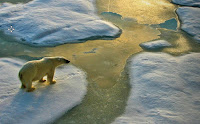 |
| Presenters: Dr. Chris Elles, Mr. Matt Krehbiel, Dr. Bret Flanders, Dr. Charles Fehrenbach, Dr. Anh Thu Le, Dr. Dean Zollman |
|
|
|
|
On June 8, 2015, a group of five physics teachers from across the state of Kansas and three
UKanTeach students from the University of Kansas (KU) met at Kansas State University (KSU) to attend the
Kansas NSF EPSCoR teacher workshop titled "Connecting the Physics of Waves and Electromagnetic Radiation with the
Next Generation Science Standards (NGSS)." This three day workshop was developed by
Dr. Chris Elles, KU Assistant Professor of Chemistry and Kansas NSF EPSCoR AMO research team member,
Dr. Jackie Spears, Director of the Science Education Center and Professor of Curriculum and Instruction at KSU, and
Dr. Paul Adams, Dean of the College of Education and Technology, Anschutz Professor of Education and Professor of Physics at Fort Hays State University (FHSU) to address physics teachers concerns related to wave and electromagnetic radiation curriculum gaps. In addition to addressing the curricular issues, this workshop facilitated the opportunity for teachers to interact with KU and KSU Atomic, Molecular and Optical (AMO) physics team members to discuss the Kansas/Nebraska NSF EPSCoR AMO research project.
Special guest,
Mr. Matt Krehbiel, Science Program Consultant for the
Kansas Department of Education, served as the keynote speaker. Mr. Krehbiel modeled and facilitated activities that demonstrated the overarching Next Generation Science Standards teaching and learning expectations. In addition, he provided the framework and emphasized the teaching strategies necessary for developing high school physics lessons related to the Wave and Electromagnetic Radiation Next Generation Science Standard.
Dr. Bret Flanders, provided some fun, hands-on demonstrations and activities designed to introduce the basic concepts of waves as well as explore wave behavior using several sound waves experiments.
On day two,
Dr. Charles Fehrenbach introduced light wave concepts. He then led the teachers on a tour through the KSU
James R. Macdonald AMO Physics Laboratory. While on the tour, the teachers observed the mechanics of the laser designs and interacted with both undergraduate and graduate students conducting AMO experiments.
Dr. Anh Thu Le introduced the theoretical aspects of the AMO research project and shared some very useful diagrams and illustrations that the teachers could easily incorporate into their lessons.
In the afternoon, Dr. Chris Elles along with the KU UKanTeach students presented early drafts of spectroscopy lessons associated with Dr. Elles' NSF Career Award and asked the current physics teachers for their experienced feedback. These lessons served as a foundation for the following day's lesson planning session and provided the teachers with some creative examples for how to directly connect the AMO research to the Next Generation Science Standards.
On the third day of the workshop
Dr. Dean Zollman introduce a unique online physics resource he created titled
Visual Quantum Mechanics. The teachers surveyed the website and recognized it could enhance a lesson related to the AMO research as well as seamlessly align with the Wave and Electromagnetic Radiation Next Generation Science Standard. As the teachers began to formulate their ideas for lessons, some of them met with the AMO graduate students and professors in small groups to solidify their understanding of the AMO physics, wave and electromagnetic radiation concepts.

Following these informal meetings, the teachers began the task of writing some model physics lessons addressing the "Waves and Electromagnetic Radiation" Next Generation Science Standard. Their goal was to design lessons that demonstrated how to construct student performance assessments; discuss disciplinary core ideas; incorporate cross cutting concepts; and create opportunities to develop science and engineering practices. Upon completion, these new lesson plans will ultimately serve as exemplary lessons for teachers across the state to utilize in their classrooms.
As a result of their participation in this Kansas EPSCoR teacher workshop, the teachers stated they now have a better understanding for how to connect the AMO Physics research with the Next Generation Science Standards as well as write lessons that reflect the state of Kansas' science education initiatives. They also appreciated acquiring a new set of activities and resources related to waves, electromagnetic radiation and AMO physics to share with their colleagues and to assist them with the implementation of the Next Generation Science Standards.
The workshop was deemed very informative, very useful and very productive by the participants.
Special thanks to all KSU, KU and FHSU faculty and staff
who made the event a great success.
 The Kansas NSF EPSCoR Track 2 Grant provides support for three Kansas undergraduate students to conduct Atomic, Molecular and Optical Physics research at Kansas State University during the summer of 2016. Students who are accepted into the program will receive a $5,200 stipend and have both travel expenses as well as on-campus room and board covered.
The Kansas NSF EPSCoR Track 2 Grant provides support for three Kansas undergraduate students to conduct Atomic, Molecular and Optical Physics research at Kansas State University during the summer of 2016. Students who are accepted into the program will receive a $5,200 stipend and have both travel expenses as well as on-campus room and board covered.








































